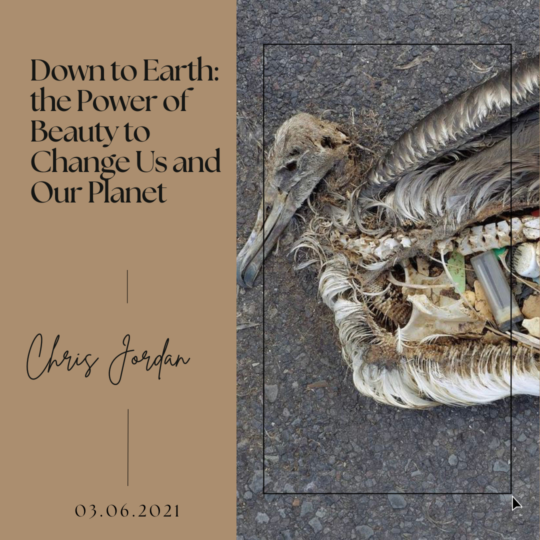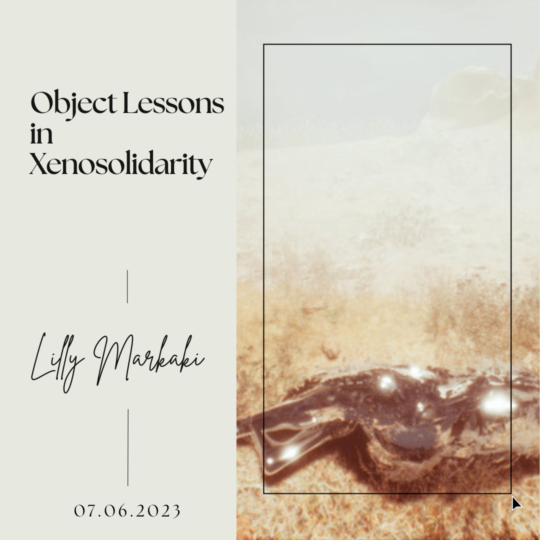The Fear of the Future
written by art historian & curator
Artistic creations are some of the best mediums to comment on the human condition and society’s concerns. Throughout history, artists have used their talents to convey their emotions, observations, and anxieties about the world around them. Their creations captured the effects of climate change on the natural world, serving as a warning and a call to action. Paintings like ”The Scream” by Edvard Munch or ”The Icebergs” by Frederic Edwin Church evoke a sense of existential fear, reflecting the looming catastrophe of climate change. These artworks convey even today the fragility of humans and our planet, as well as the fear of what the future holds. In the contemporary era, many pressing issues have been at the forefront of global concern: climate change, social injustice, and artificial intelligence (AI).
Videos you may enjoy as well:
Writers have also developed a genre in literature called climate fiction or simply ”cli-fi”, novels that explicitly address climate change and its potential consequences. Authors like Margaret Atwood, in her novel ”Oryx and Crake” and Kim Stanley Robinson, in his ”Science in the Capital” series, explore dystopian futures shaped by environmental degradation. These works not only predict the fear of the future but also serve as a cautionary tale, urging society to take action to prevent such bleak scenarios. Is there a way in which art can predict and depict the fear of the future, particularly concerning these two interconnected issues? If so, how can artists express through various forms of art, including visual art, literature, and music, a sense of the world in decline?
Social Art in the Mainstream
One can argue that today social art is more powerful than in the past, with more voices coming from different backgrounds and more issues being addressed. Several factors suggest that social art may have a more prominent role in contemporary society. One of these factors is easy access to information. With the advent of the internet and social media, information and art can be disseminated more widely and rapidly than ever before. Artists can reach global audiences, allowing their messages to resonate with a diverse range of people. Their actions can have real consequences in the lives of specific communities, which may have been suppressed before.
JR, the enigmatic French artist and photographer, is celebrated for his captivating works that transcend traditional artistic boundaries. His distinctive style blends art, social commentary, and public engagement, leaving an indelible mark on the world’s streets and minds. JR’s most notable project, ”Inside Out”, invites people from diverse backgrounds to share their portraits and stories, which are then transformed into massive posters displayed in public spaces. This global participatory art initiative has visited cities worldwide, shining a spotlight on personal narratives, raising awareness of various social issues, and fostering a sense of unity among communities.
If we look at the map of the contemporary art market, one can observe how this often engages with more and more social concerns, reflecting our societal pattern. We see less art for art’s sake and more art for the future. This observation can be based on the trends and themes evident in the art world, as well as the work of many first-line contemporary artists. Climate change, immigration, racial equality, and gender identity, are pressing concerns. Artists through their work provide a platform for important conversations and the promotion of change. This diversity of artistic voices is beautiful and opens multiple perspectives on the same issue.

Zaria Forman is a contemporary American artist renowned for her mesmerizing and emotionally charged pastel drawings of icebergs, glaciers, and other polar landscapes. Her work masterfully combines artistry and environmental advocacy, aiming to inspire an emotional connection with the impact of climate change. Forman’s hyperrealist depictions are breathtakingly detailed, capturing the beauty and fragility of these remote, rapidly changing regions. One of her most notable series is ”Chasing the Light”, inspired by her voyage to Greenland, where she witnessed the dramatic melting of the ice. These large-scale drawings convey the luminosity and intricacies of ice formations, inviting viewers to contemplate the consequences of global warming. Forman’s art is not limited to aesthetic appeal; it serves as a powerful call to action. Through her work, she strives to raise awareness about climate change’s devastating effects on polar environments and the planet as a whole. By visually representing the vulnerability of these landscapes, she engages the audience on an emotional level, compelling them to reflect on their role in preserving our natural world. Her work has been exhibited in galleries and museums worldwide, attracting a broad audience to the urgent cause of climate change. Zaria Forman’s remarkable ability to merge artistic excellence with environmental consciousness underscores the vital role of art in advocating for a sustainable future.
Digital Technology and the Loss of Art
Advances in technology have opened up new possibilities for artists to create interactive and immersive art experiences that can deeply engage audiences. AI and technology have introduced new forms of art and digital media, expanded creative possibilities, and made art more accessible and diverse. However, there are some concerns and challenges that artists, institutions, and traditional art forms may face due to advancements in technology and AI. It is well known that technology can change how audiences engage with art.

Some traditional artists may feel pressure to adapt to digital tools or incorporate technology into their practices, which can be challenging for those who are deeply rooted in classical techniques. Other artists have used AI as a tool to create art, blurring the lines between human and machine creativity. For example, the work of Mario Klingemann, who uses neural networks to generate art, raises questions about the role of human artists in an AI-dominated world. This form of art predicts a future where AI plays a significant role in artistic creation but also carries a sense of uncertainty and fear regarding the potential loss of human agency in the creative process. The artist Refik Anadol has used AI algorithms to create immersive art installations that visualize climate data. These artworks highlight the role of AI in understanding and addressing climate change while also conveying the fear of a future where AI may be the only hope for mitigating the crisis.
Another pressing issue is how the art market is shifting due to the birth of NFTs. Non-fungible tokens (NFTs) have catalyzed a profound transformation of online art sales and have enabled artists to sell directly to collectors and bypass traditional intermediaries. This decentralized approach has democratized the art market, making it more accessible for emerging artists. However, the shift may impact the traditional gallery and auction house model, leading to challenges for artists working in classical forms.

In reality, AI and technology have not led to the extinction of classic art but expanded the landscape of art, offering new possibilities and challenges. Many artists incorporate technology and digital tools into their classical art practices. They use digital tools for drafting, reference, and even for the creation of new media art that bridges the classical with the contemporary. Also, advanced techniques such as digital imaging and 3D scanning are used to conserve and study classical artworks, ensuring their longevity. Classical art, with its deep historical and cultural roots, continues to be a vital and respected form of artistic expression. It offers a unique means of conveying human experiences and emotions that cannot be replicated by technology. Technology can enhance art experiences, but the essence of classical art remains rooted in the human touch. More than this, classical art forms are taught and appreciated in academic and artistic institutions. These institutions adapt to incorporate technology into their teaching methods while emphasizing the importance of traditional artistic techniques. Both classical and contemporary art forms coexist, enriching the artistic world and allowing for diverse expressions of creativity. The arts continue to evolve and adapt to the changing technological landscape, ensuring their ongoing relevance and significance.
Music for Earth
Music, too, serves as a platform for artists to express their concerns about climate change. Songs like Radiohead’s ”Idioteque” or Björk’s ”All Is Full of Love” convey a sense of anxiety and uncertainty about the future. These compositions capture the emotional and psychological impact of climate change on individuals and society as a whole.
Musicians have experimented with blending climate change and AI themes in their compositions. The British electronic musician Holly Herndon, for instance, incorporates AI-generated sounds into her music to create an eerie and unsettling atmosphere that mirrors the uncertainty of the future in a changing climate. These musical expressions capture the complex emotions and fears associated with the intertwined challenges of climate change and AI.
Art has a unique capacity to predict and depict the fear of the future, and it does so in a way that engages our emotions and imagination. Through visual art, literature, and music, artists have been able to convey the profound sense of apprehension surrounding climate change and AI. These two issues are deeply interconnected, as climate change poses existential threats to humanity while AI introduces new complexities and uncertainties. Art not only predicts the fear of the future but also invites us to confront and reflect upon these fears. It reminds us of the urgent need to address these critical challenges before they become irreversible. In the face of a world in decline, art inspires us to strive for a more sustainable and ethically responsible future, where both the environment and human creativity can flourish.






Leave a Reply